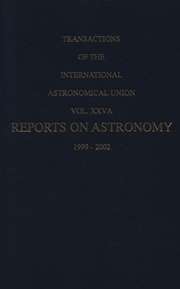No CrossRef data available.
Article contents
7. The chemical composition of the stars and its relation to stellar evolution
Published online by Cambridge University Press: 02 August 2017
Extract
On the one hand the rate at which stellar evolution progresses will depend on the chemical composition of the star. On the other, as a by-product of the nuclear processes involved in the energy production, the chemical composition of the reacting material will change. Stellar models can be used to provide information as to the composition of the reacting zones, stellar spectroscopy will provide the composition of the atmospheres, and of those zones of the stellar envelope which have been well mixed with the atmosphere by convection and circulation currents.
- Type
- Part IV Symposia
- Information
- Copyright
- Copyright © Cambridge University Press 1954


